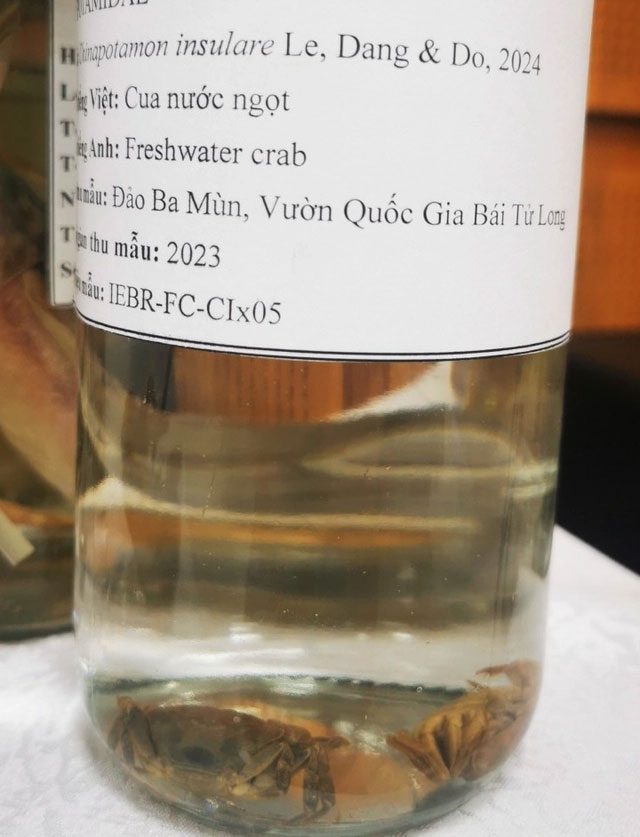A Completely New Species of Crab Discovered in Quang Ninh Province
The specimen of this new crab species was announced during the transfer of biological samples to the Quang Ninh Museum for exhibition and scientific research on December 11-12. The ceremony took place at the Quang Ninh Museum, organized by the Quang Ninh Department of Natural Resources and Environment in collaboration with the Institute of Ecology and Biological Resources, and the Institute of Marine Resources and Environment (Vietnam Academy of Science and Technology).

New freshwater crab species found on several islands in Quang Ninh. (Photo: Do Hung).
Notably, among the findings was a completely new crab species discovered during the scientists’ investigation, inventory, and establishment of a biodiversity database for Quang Ninh Province.
This is part of the results from the “Assessment and Establishment of Biodiversity Database for Quang Ninh Province.”
Among the 22 biological samples received by the provincial museum during this occasion, 11 specimens of 9 economically valuable squid species commonly found in the waters of Quang Ninh stand out. Additionally, there are 8 specimens of 4 species of small octopus belonging to the genus Amphioctopus, newly recorded to supplement the list of cephalopod fauna in the waters of Quang Ninh and the coastal waters of the Gulf of Tonkin. A specimen of a large octopus has also been recorded for the first time in Vietnamese waters.
Furthermore, there are 2 specimens of a new freshwater crab species (Chinaptamon insulare), which are only found on several islands in Quang Ninh (Ba Mun Island, Cai Lim, Co To, Thanh Lan). The identification results of this new species have been submitted to the prestigious international journal Zootaxa for publication at the earliest opportunity.
Leading scientists assess that although the number of specimens is not large, they hold significant meaning, contributing to further affirming the value of biodiversity in the coastal and island waters of Quang Ninh. The provincial museum’s addition of these specimens to its exhibition will attract scientists from around the world for research, enhancing the quality of displays for visitors.


















































